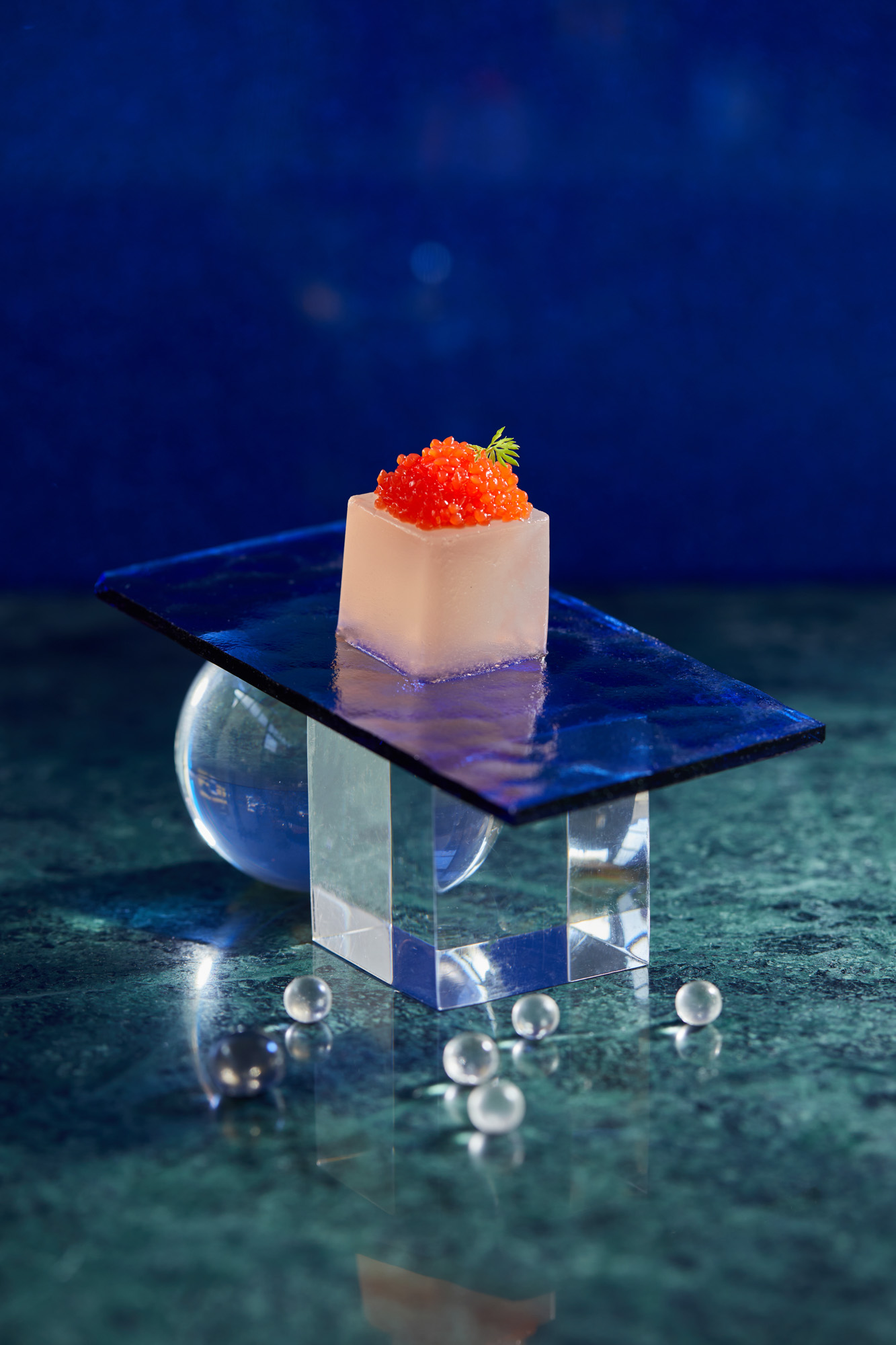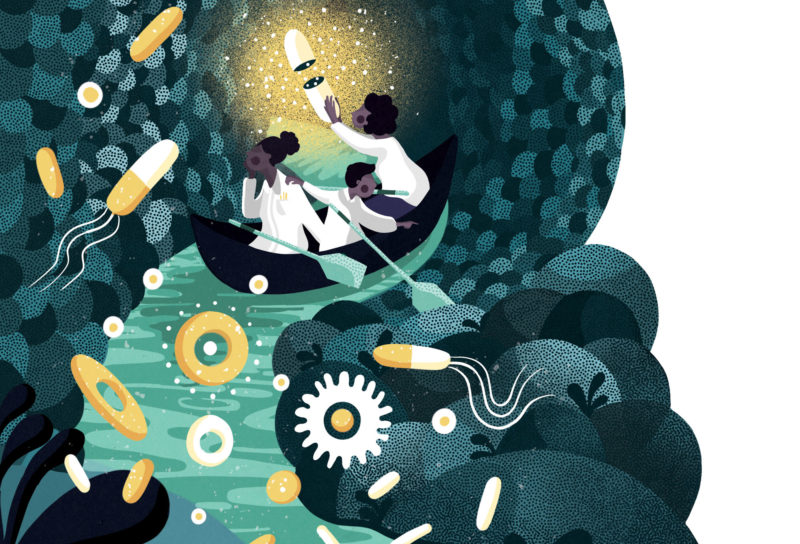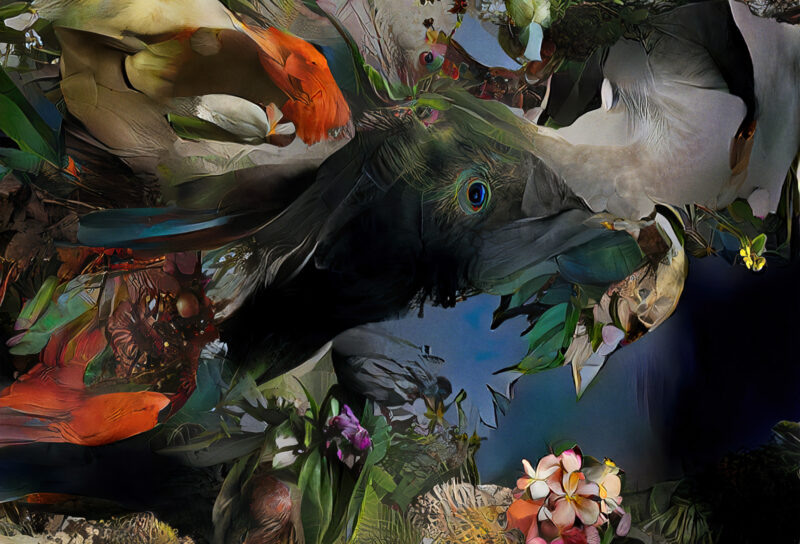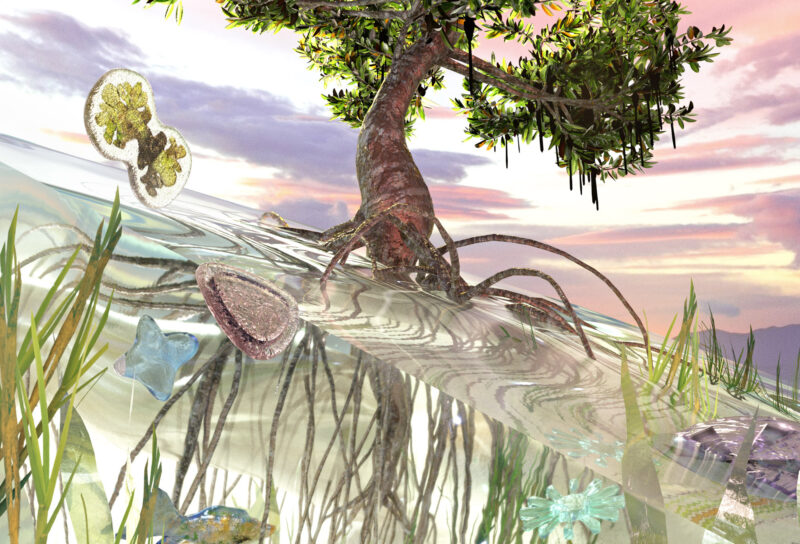One day in late March, Larissa Zimberoff arrived at Wildtype’s San Francisco headquarters, ready to eat. Zimberoff, a journalist, is the author of Technically Food, an exposé of Silicon Valley’s efforts to “replace real food with technology-driven approximations.” She is also one of the world’s few connoisseurs of future food in its beta-testing stage, having sampled everything from mycelium-based steak and lab-made cocoa-free chocolate to cream cheese coaxed from microbes found in geysers at Yellowstone National Park.
She was onsite to dine on Coho salmon, harvested from Wildtype’s recently completed pilot plant, which has the capacity to produce 200,000 pounds of sushi-grade salmon a year. This was no ordinary fish. Wildtype’s salmon — grown from immortalized cells — is not available to the public, nor is any other cell-based seafood product. As of now, only Singapore’s government has approved the sale of a cell-based product: cultivated chicken developed by U.S.-based Eat Just. Against this regulatory impasse, cellular agriculture has grown in the past decade from a sci-fi fable to a $2 billion industry, with more than 80 companies racing to bring cell-based meat to the dinner table. Among the 14 companies (and counting) specifically focused on cell-cultured seafood, Wildtype, founded in 2016, is among the most advanced. “We haven’t had to interact with a live fish in about three years,” Aryé Elfenbein, Wildtype’s cofounder, told me.
After touring Wildtype’s plant, Zimberoff sat down for her meal. She described a block of flesh, “the approximate size of a bar of soap,” of that vivid orangey-rose hue that can only be described as salmon-colored, striated at regular intervals with bands of pearly albumin.
She watched closely as chef Monique Feybesse, fresh off a stint on Top Chef Season 19, transformed the block of salmon into three elegant presentations: on a slice of toasted brioche with creme fraiche and herbs; served ceviche-style with a dash of citrus; and minced and spicy, like the inside of a salmon roll.
The staff looked on as she dug in. This was a supercharged version of the classic critic-visits-the-restaurant scene we know from movies like Big Night or Chef, except that in this case the meal in question took years of research and millions of dollars to generate. Zimberoff chewed, considered, and made up her mind. The taste and texture: Unobjectionable. Even pleasant. Definitely salmonesque. But — and this was a big “but” — oddly artificial. “Almost too perfect,” she concluded. “It’s not quite there yet, you know?”
This verdict was painfully apropos. Cell-cultured seafood has been “not quite there yet” for years, its future remaining stubbornly on the horizon. The hurdles it faces on its way to market are numerous. Many of them are primarily of academic interest: growth media, scalability, regulation. Zimberoff’s nosh, however, cuts right to the meat of the challenge. How do you build a fish from scratch, and manage to get its taste and texture just right? How do you convince consumers who are notoriously wary of synthetic “Frankenfoods” that lab-grown fish is just as good as the time-tested original — or maybe even better?
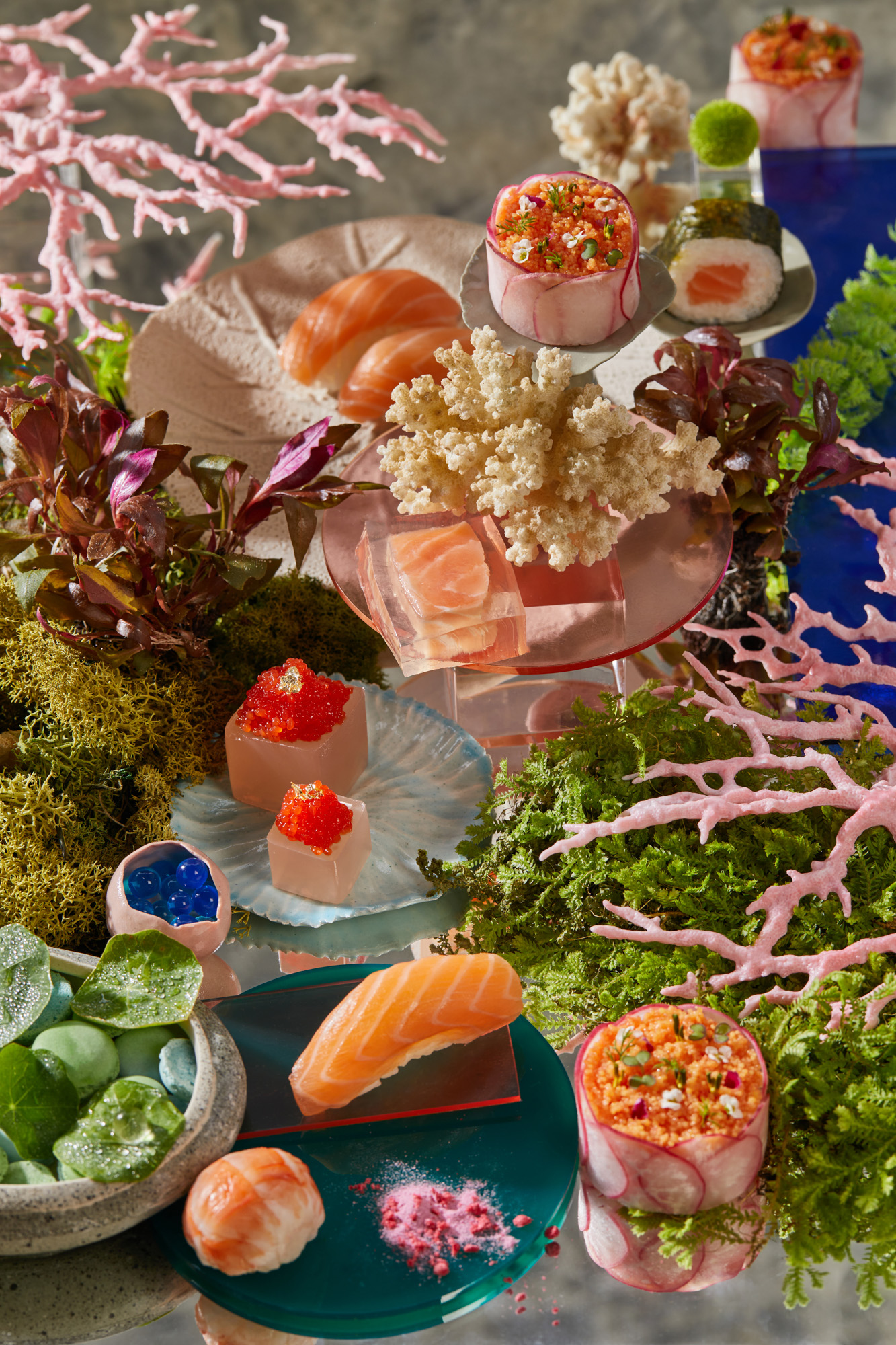
Elusive Fishiness
The promise of cellular agriculture is the mass production of real animal products — foods and goods that carry tremendous cultural, emotional, and economic value — with a fraction of the environmental impact and no animal suffering. The companies focused on making cell-cultured seafood a reality seek to avert an ongoing crisis of oceanic proportions. The UN Food and Agriculture Organization (FAO) warns that more than a third of the world’s marine fisheries are overfished and in danger of collapsing. Popular fish like Atlantic cod, Chilean sea bass, and bluefin tuna are particularly affected. Rising levels of heavy metals and other contaminants, including microplastics, make eating certain kinds of fish a risky prospect. Despite these snowballing concerns, global seafood consumption continues to increase, having more than doubled between 1990 and 2018, according to the FAO. The human hunger for fish is rising while the supply falters.
The hopeful pioneers of cell-cultured seafood promise a simulacrum of this important staple of the world diet, without all the contamination: a bounty of fish, shellfish, and crustaceans, fresher than we’ve ever experienced and entirely traceable. In short: we can eat our fill of fish and still have fish left in the ocean, too.
How do you build a fish from scratch, and manage to get its taste and texture just right?
But all these ethical perks only get you so far with consumers. Specifically—explains Christian Dammann, COO of Berlin’s Bluu Biosciences, the largest cellular seafood startup in Europe—they only get you to the first bite. Consumers “buy it the first time because animals don’t have to die,” he says. “We want people to bite into it and say, ‘Hey! This tastes great! And: you can do something good for yourself and the planet.’” Consumers consistently cite taste and texture as the most important factors in determining whether they would make alternative seafood products — plant-based or cell-cultured — a part of their diet. Environmental bona fides and health claims are not enough. Most people will not sacrifice their tastes for their values. How do you make the simulacrum as palatable as the real thing?
You might expect salmon cells grown in a bioreactor to intrinsically taste a lot like salmon from the ocean. After all, aren’t they the same thing, biologically speaking? Salmon tastes like salmon — rather than cod, tuna, crab, or any other kind of thing — because of a particular set of chemical reactions and compounds formed within and among its cells. These processes are encoded in DNA, and should be present in free-swimming or cell-based seafood.
But this is only part of the story. Flavor isn’t simply an expression of DNA, a realization of innate genetics. It is also a reflection of the life lived by an organism before it became food, its own trajectory from planet to plate. A fish’s flavor is informed by the environment it lives in, its diets and movements, something that can’t readily be duplicated by a constellation of cells in a sterile bioreactor. Food engineers have been working hard to refine the tricks that can turn the right cells into the right flavor, replicating a subtle and not-always-popular taste and texture that comes out of dozens of constraints, biological and geographic. The dicey question they face isn’t just, ‘what does this particular fish taste like?’ but ‘what do people want it to taste like?’ These flavors are complicated cultural as well as biochemical constructions.
In a 1985 episode of her public television series, The Way to Cook, the formidable Julia Child guides viewers in the art of confirming the freshness of fish. In addition to looking for glistening skin, bright eyes, and pink gills, she offers an olfactory clue: “Just smell it,” Child instructs, holding a red snapper up to her nose and taking a deep sniff. “Not a trace of fishiness there! If it’s fishy at all, don’t buy it.” Trimethylamine, the compound that we most associate with nose-wrinkling “fishiness,” is largely a product of microbial decomposition. Following the tutelage of Child and other culinary authorities, many eaters in the U.S. prefer fish that is mild-tasting and definitively not “fishy.” Freshness is not always desirable, of course. Deeply funky fermentations, like Southeast Asian fish sauce and the ancient Roman condiment garum, develop their craved-after umami tang from carefully controlled rot. This is another part of cultured seafood’s most essential challenge: notions of good fishiness are culturally highly specific.
Mihir Pershad, the cofounder and CEO of Umami Meats in Singapore, is exquisitely aware of the importance of attending to flavor expectations. His company is working to cultivate Japanese eel, a fish deemed endangered by the International Union for the Conservation of Nature (IUCN) since 2014. Japanese eel caught in Northern Japan tastes quite different than eel from the rivers of the Southern part of that country, Pershad tells me. The former is firmer and fattier, while the latter is milder. These differences correspond with divergent uses in cuisine and, indeed, with distinct culinary cultures. Successfully meeting the Japanese demand for eel might mean developing multiple cell-cultured eel products with distinct flavor profiles. Their goal is not just to feed people a singular cell-cultured eel, he reflects. It is “to give people what they’re getting today, so we don’t feel like we’re losing a major part of culture.”
If that weren’t challenging enough, the flavor of individual species is in constant flux. The changing environment is doing its part. There is building evidence that the warming of the ocean water has consequences for flavor. A 2022 study by Australian scientists surveyed existing research into the effects of climate change on the nutritional and sensory qualities of seafood. The Chinese razor clam improved in aroma according to a 2019 study modeling climate change. The pacific oyster, meanwhile, showed no appreciable difference after being exposed to warmer, more acidic waters.
Sam Dupont, who studies the effect of climate change on marine ecosystems at the University of Gothenburg in Sweden, investigates the likely effects of warmer, more acidic oceans on the flavor of seafood. In one study, a panel of tasters were asked to evaluate Northern shrimp raised under two conditions: at the current ocean pH, and at a decreased pH meant to model the future state of the oceans. The tasters found the shrimp of the future, raised in more acidic waters, significantly less tasty than the shrimp of today. The study was repeated with mussels. “For local tasters, the mussels of today were preferred to the future ones, but for foreigners, it was the opposite.” This, he said, shows the role of acquired taste; “the local mussels have a strong taste that locals really like, but is too strong for foreigners. The main conclusion is that taste is changing under ocean acidification, but what is preferred depends on what you are used to.”
All these boundary conditions are so subtle and highly specific that some experts find it useful to think of them as terroir. In wine, terroir, or “taste of place,” describes all the ways the land and labor of a specific region shape our experience of the flavors in the glass. In recent decades, the terroir concept has oozed out from the wine world to encompass all kinds of things, from clams to cannabis. Terroir reflects a belief that place instills particular sensory qualities; this translates to increased market value. In other words, people tend to pay more for goods that communicate their origins. So where does that leave cell-cultured seafood, grown in sterile vats designed to be scalable, standardizable, and deployable everywhere? Is there a laboratory terroir?
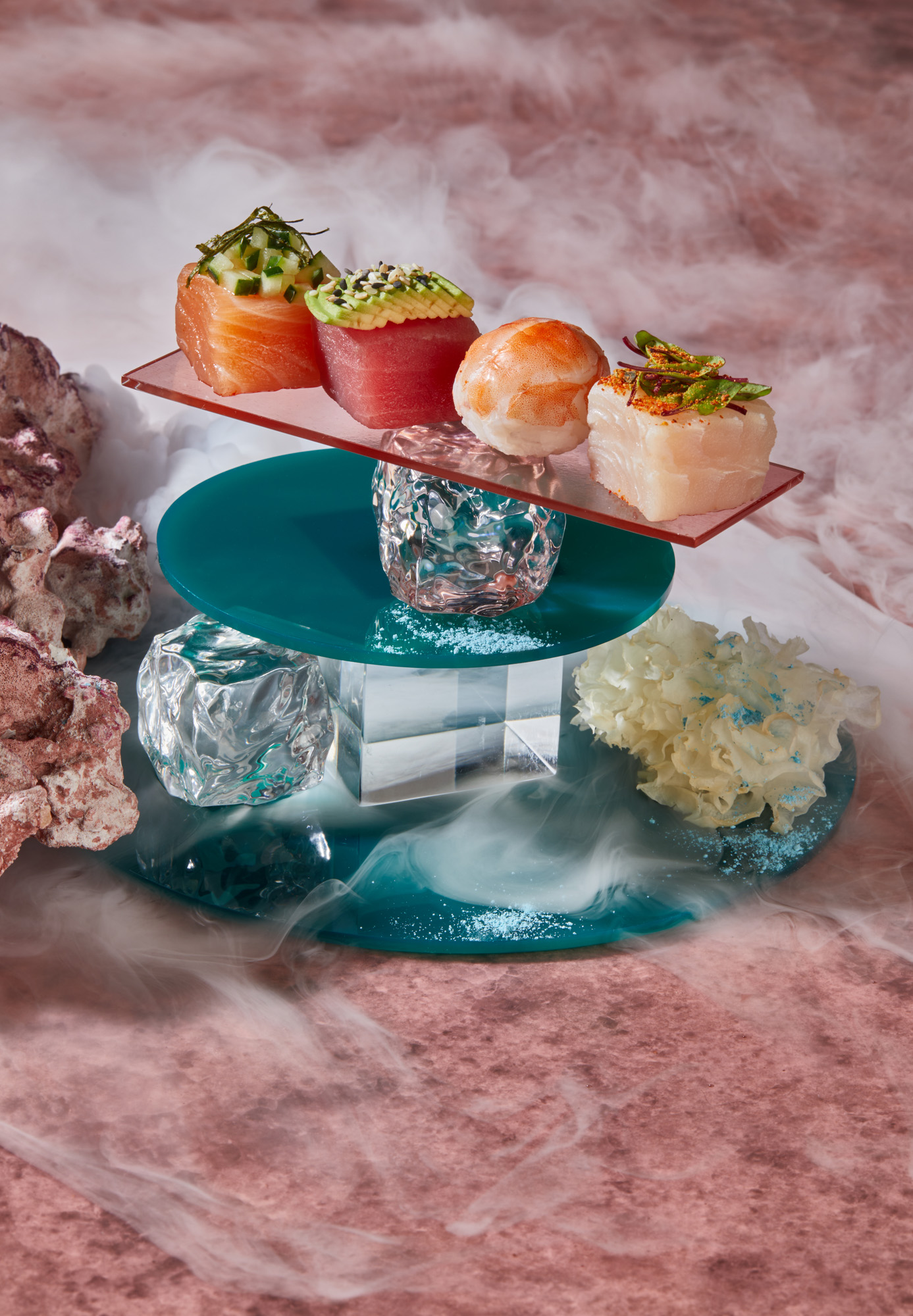
Labfresh
Cell-cultured seafood remains a step or two behind lab-grown meat, which over the past two years has been making rapid strides towards the market. “The learning curve for fish has been steeper, because there has been so little fundamental research on fish muscle tissue engineering,” observes David Kaplan, chair of Biomedical Engineering at Tufts. People just eat many more species of seafood than terrestrial animals, and every new cultured species requires a fresh investigation. “Rainbow trout will have different requirements than crab, which will be totally different than oyster,” says Reza Ovissipour, an assistant professor at Virginia Tech. To recreate something, you must know it intimately. Creating new cell lines often means getting on a boat and going fishing. “I have been seasick in the name of science,” David Kaplan laughs.
When new cell lines are established, the tastiness of a particular fish specimen is generally not part of the selection criteria. Instead, researchers focus on more practical concerns: capacity for immortalization, the rate of cellular division, and general robustness. In other words, they’re looking for cells that are good performers, not flavor bombs.
They are also looking for cells that are good team players, as cellular engineers must also build texture, which in seafood is at least as important as taste. When we take a bite of fish, we are consuming different kinds of cells — muscle, fat, connective tissues — arrayed together in accordance with the vital requirements of the species. Consider the flakiness of grilled sea bass, the way the filet separates into discrete layers with the gentlest prod of a fork. The sea bass’s body grows like this so that it can live, but it won’t grow this way unassisted in a bioreactor. Producers of cell-cultured seafood like Wildtype must find ways to recreate or mimic the three-dimensional arrangements of cells.
Flavor is the final step in the cultivation process. As Kaplan explains, “one of the really important advantages of cellular agriculture is that you have direct access to the cells. And cells are amazingly flexible, if you handle them correctly.” He suspects that manipulating the growth media and the environment within the bioreactor may significantly influence the flavor qualities of the final products. “This is an area of research that hasn’t been pushed very far,” he acknowledges, “but I think there’s a lot that you can do by what you feed the cells.”
In some ways, the taste of the simulacrum could turn out to be superior to the original. The seafood we eat now is often far removed from its place of origin, whether wild-captured or farmed, and is almost certainly frozen at some point. Even fish bought fresh at a fish market might have been captured weeks earlier, depending on the length of the vessel’s journey. Cell-cultured seafood, meanwhile, could be the freshest we’ve ever consumed, days or even moments from harvest. And because it is grown in a sterile environment, the trimethylene fishiness produced by microbial metabolism will also be curtailed: a decidedly less fishy fish.
This unfamiliar freshness may contribute to the slight uncanniness in our initial encounters with these lab-grown seafoods. “People will often describe our product as mild,” notes Aryé Elfenbein, cofounder of Wildtype. The taste of truly fresh salmon is delicate and subtle; an eater accustomed to today’s commercial salmon may be missing that. “If you were to pull a salmon out of the river and take a bite right there, that flavor profile would be very mild.”
In other words, accepting — and growing to love — cell-cultured seafood may mean recalibrating our expectations, tuning in to subtler qualities, and savoring the unplaceable freshness of laboratory terroir.
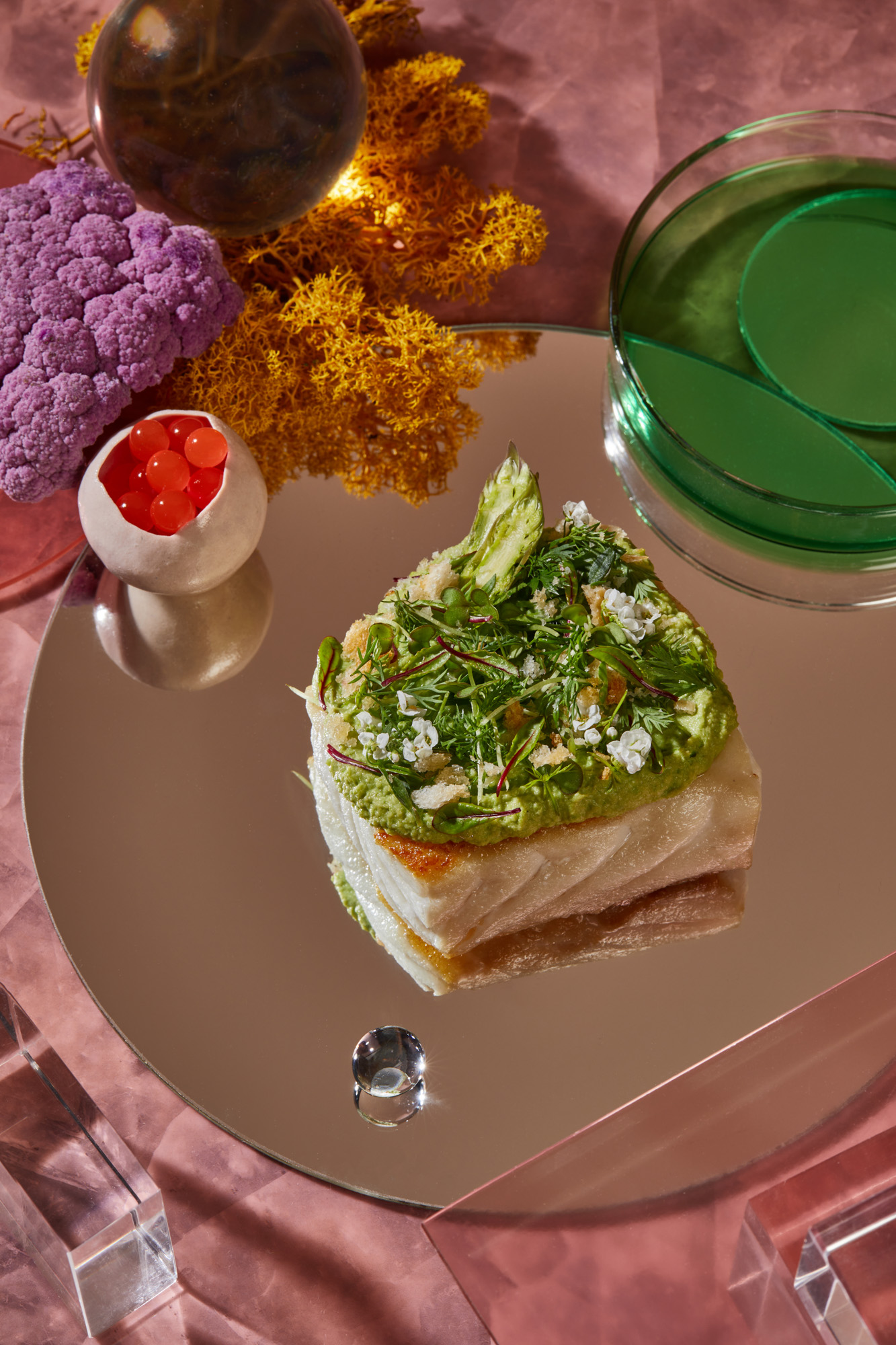
Imitation Tuna
The world of sushi seems like a natural destination for this future product — and a lucrative industry to disrupt. In 2019, a 600-pound bluefin tuna — a species known as the gem of “the sushi economy,” which keeps slipping in and out of endangered status — fetched over US$3 million at Tokyo’s famous New Year’s auction.
Lou Cooperhouse, the CEO of BlueNalu, a cell-based seafood company that raised $60 million in 2021, has taken particular interest in the bluefin. The former head of Rutgers Food Innovation Center, a startup incubator and accelerator, Cooperhouse says he is “fascinated with technology, but only technology that delivers delicious products.” BlueNalu’s efforts to know and eventually reproduce this expensive fish occur in close consultation with sushi chefs and other food service operators. “We’ve brought them in to try to understand what’s most desired,” he says — what qualities they value most. BlueNalu is designing for the market, on a cellular level.
“We found that there’s extraordinary variability between one bluefin and the next,” he says. “Bluefin tuna, it’s a big fish. The lean meat near the dorsal fin, called akami, is bright red in color, and has a metallic aftertaste. By contrast, toro, the tender belly of the fish, has a clean, fatty mouthfeel.”
In the sushi economy, toro fetches top value. But as sushi-grade fish is often sold whole, sushi bar operators have to find uses for the less popular cuts. Cell-cultured seafood removes the necessity of separating the meat from the bones, the filets suitable to be served whole and pan-seared from those best left for stew, disposing of the fins and scales, the guts and eyes. In other words, cell-culturing solves what is known as the “carcass-balancing problem,” the challenge of creating markets for the less-than-desirable parts.
We can eat our fill of fish and still have fish left in the ocean, too.
“This is a paradigm buster,” gushes Cooperhouse. “We can ask, where are you making your money? What do your customers enjoy? We can make just the parts [of the fish] that your customers come to you for.” BlueNalu could produce one continuous, never-ending ribbon of fatty belly, a bluefin that is all toro.
I ask him about the possibility of making a toro that is somehow more delicious than exists in nature. He demurs. “Right now, we’re focusing on giving people what they expect,” he says. “It’s challenging enough to get our product approved” by the FDA, which is overseeing cell-based seafood, without making alterations that can compromise a regulatory greenlight. “But we certainly realize that there are interesting opportunities to do more, whether on the flavor side or the nutrition side.”
Keith David, a cofounder of Bluefin Foods, a San Diego startup also aiming to grow the prized tuna, is more eager to speculate about the future of designer cell-based fish. “One of the beautiful things about cultivated meat and seafood,” he says, “is that you have the ability to control the product at the cellular level — or even the molecular level. You have so many different levers and knobs to pull.” Producers could alter the ratio of fat to muscle, for instance. “There’s an inherent customizability that just comes out of the process.” Of course, none of the companies operating in this space are quite at this stage yet. “This is not a simple or an easy problem,” he concedes, “but it is a solvable problem.”
Will anyone eat it?
Palatability is about a lot more than flavor, of course. It is also about how we feel about a food and where it comes from, how it is made. It’s a basic principle of anthropology: food preferences and prohibitions define the distinctions among cultures and groups. Tell me what you won’t eat, and I’ll tell you who you are, to paraphrase Brillat-Savarin. Anyone who has ever cared for a small child knows how stubborn food preferences can be, how incontrovertible a refusal. This is also a lesson well-known within the food industry. Around 80 percent of new foods introduced in grocery stores fail. Supermarkets are haunted by the ghosts of Crystal Pepsi and Heinz’s green ketchup.
For modern eaters, the distinction between natural and unnatural in food is increasingly critical — even as the lines between the two are ever more blurred. According to the International Food Information Council, nearly two-thirds of U.S. consumers prefer products made with familiar-sounding ingredients, and the fewer the better. Food companies have scrambled to oust “artificial” ingredients from their products, reformulating processed food staples like Kraft Mac & Cheese and Nerds to remove all traces of synthetic or “chemical-sounding” components. Meanwhile, the symbol of a butterfly on a blade of grass, signifying that a product contains no GMOs, proliferates in supermarket aisles among snack foods and staples — a nod to consumer fears about new food technology.
This resistance to new kinds of food is not indelible, nor is it inevitable. When Vermont passed a law in 2016 requiring food labels to disclose the presence of bioengineered ingredients, the multinational food companies like Monsanto and Pepsi that opposed it assumed it would raise alarms among consumers and lead to declining sales. Instead, opposition to GMOs in the state fell nearly 20 percent, even as attitudes in the rest of the country were shifting in the other direction. One lesson is that transparency and information can change attitudes.
Transparency doesn’t mean that eaters want to know every detail of how the proverbial sausage gets made. This is another consideration for an industry where calf blood remains the primary growth medium. Does the lab origin itself scare consumers away? How do you present this new product? This fascinating design and marketing challenge also extends to language. The industry only recently settled on the adjective “cell-cultured,” after trying out the more evocative “lab-grown” and the unpalatable “in-vitro meat“ beforehand.
For David of Bluefin Foods, at least, taste will be the decisive factor. “One of our greatest strengths is our ability to offer fresh, healthy, sustainable seafood anywhere on Earth — or off of it,” he says. “We’ll be able to produce delicious seafood in the middle of the desert, two thousand miles from the ocean. We’ll be in Elon Musk’s Mars mega mall.” How to get there is a question for another day. This is the promise and the pitfall of food futurism. The spoils of the distant future are much more enticing than the struggles required to attain them.
